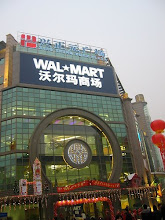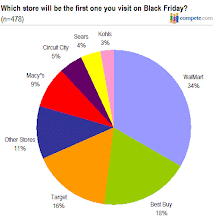In the early eighties, Wal-Mart placed heavy emphasis on developing and implementing tight supply chain solutions which has catapulted them not only to the top of the retail channel – but into the history books.
If you purchase a flashlight at Wal-Mart. The cash register reads the bar code price tag and reportedly within fourteen seconds, the Wal-Mart central warehouse is notified that the Wal-Mart retail store needs a new flashlight for the shelf to replenish the purchased item. Further, the manufacturer is also notified that the Wal-Mart central warehouse needs a new flashlight. Even the raw material suppliers are notified that the manufacturer now needs a little more raw materials (plastic housing, switch, light bulb, etc), and so it goes – all the way up the supply chain.
Wal-Mart’s legendary supply chain technology has allowed them to break the three-day barrier that some economists in the eighties felt was largely unbreakable. In other words, Wal-Mart is often able to replenish items on the Wal-Mart shelf in less than three days – not from the central warehouse to the shelf, but from the manufacturer to the shelf. With quick and reliable 2-day turn around, Wal-Mart is able to maintain lower levels of inventory and still meet customer demand. These lower inventory levels result in either a reduced floor plan with lower carrying costs and lower interest expense – or a greater diversity of products on the store shelves. (ie: With faster replenishment, Wal-Mart can get away with carrying just 5 toasters instead of 10, thereby freeing up more shelf space for those George Foreman Hamburger cookers.)
Additionally, because Wal-Mart is better able to order inventory on demand, the company is in a better position to meet customer demand. Wal-Mart’s superior supply chain technology allows the company to better avoid carrying an oversupply of fad items.
To fully appreciate the benefits Wal-Mart reaps from its’ superior supply chain solution, consider the traditional labor and paper approach, which is still employed by millions on companies today. Without and automated supply chain, an employee must make a periodic physical inventory count – usually using a clipboard and inventory report. Later, the actual quantities on-hand are then compared to the target quantity levels in the back office to flush out the re-order quantity. From there, employees fill out purchase orders and phones them into the central warehouse – all the while generating expenses for labor costs, paper supplies, and even the long distance phone call. Inefficiencies are a certainty. On many occasions, employees placing orders via the telephone are placed on hold for several minutes, costing valuable time. Eventually the purchase order details are read aloud to the order taker at the central warehouse – a very inefficient process by today’s standards.
Monday, June 15, 2009
Subscribe to:
Post Comments (Atom)




No comments:
Post a Comment